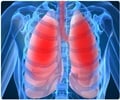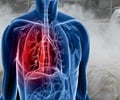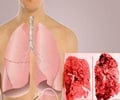Artificial intelligence or AI correctly interprets lung function test results and helps pulmonologists diagnose lung disease in patients.
- Artificial intelligence (AI) can assist lung doctors to interpret respiratory symptoms accurately and diagnosis correctly
- AI computer algorithm was created using good quality data. The interpretations of lung function test results done by lung doctors and AI were compared
- AI provides better and quicker service, as it can serve as a second opinion for pulmonologists and aid to their decision-making
TOP INSIGHT
Diagnosis of lung disease by artificial intelligence (AI) is more accurate compared to pulmonologists, proving that AI can serve as a second opinion for pulmonologists when they are assessing and diagnosing their patients.
Pulmonary function tests (PFT) include:
- Spirometry where the amount of air inhaled and exhaled is measured
- Plethysmography test or a body box which enables doctors to assess lung volume
- Diffusion capacity test which tests the efficiency of the alveoli (small air sacks in the lungs) to see how well a patient's lungs transfer oxygen and carbon dioxide to and from the bloodstream
Obtaining the AI algorithm using good quality data
First, the research team trained the AI algorithm - to do this they used historical data from 1430 patients from 33 Belgian hospitals.An expert panel then assessed the data using patients' medical histories, results of all PFTs and any additional tests and came to a conclusion on the correct interpretation and diagnosis for each patient.
The team then measured the interpretations against gold standard guidelines from the European Respiratory Society and the American Thoracic Society.
The results were used to develop an algorithm to train the AI, before validating it by incorporating it into real clinical practice. The algorithm was made to recognize patterns up to nine different diseases.
Study
The study involved 120 pulmonologists from 16 hospitals situated in European countries like Belgium, France, The Netherlands, Germany, and Luxembourg).The study measured the results from both interpretations against the gold standard guidelines in the same way as during development of the algorithm.
- The interpretations of the PFTs by the pulmonologists matched the guidelines in 74 percent of cases while the AI-based software interpretations matched the guidelines with a perfect score of 100 percent
- The doctors diagnosed the primary disease correctly in 45 percent of cases while the AI gave a correct diagnosis in 82 percent of cases
It is certain that AI will not replace doctors – doctors have the ability to see beyond just the PFTs alone. They see a broader perspective which enables them to make decisions based on a combination of many different factors. However, AI will help doctors accomplish more and decrease chances for errors and redundant work.
The researchers plan to get more hospitals to use AI in the future and investigate transferring the technology to primary care, where the data would be captured by general practitioners to help them make correct diagnoses and referrals.
Reference:
- AI improves doctors' ability to correctly interpret tests and diagnose lung disease - (https://aitopics.org/doc/news:23E604F8/)
Source-Medindia
 MEDINDIA
MEDINDIA





 Email
Email










